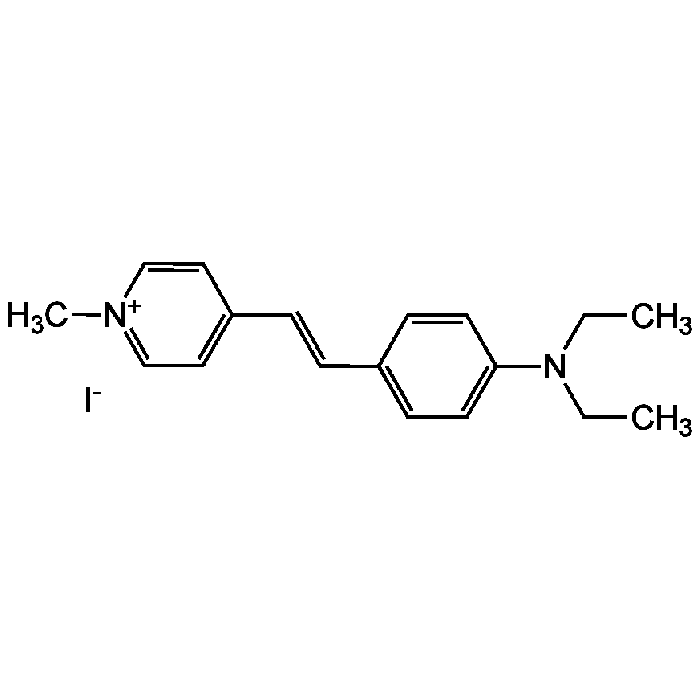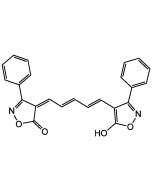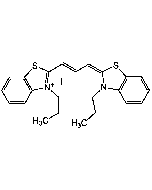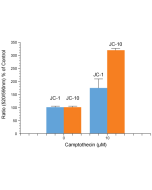Cookie Policy: This site uses cookies to improve your experience. You can find out more about our use of cookies in our Privacy Policy. By continuing to browse this site you agree to our use of cookies.
Chemodex
4-Di-2-ASP

| Product Details | |
|---|---|
| Synonyms | 4-(4-Diethylaminostyryl)-1-methylpyridinium iodide; DiASP |
| Product Type | Chemical |
| Properties | |
| Formula |
C18H23IN2 |
| MW | 394.29 |
| CAS | 105802-46-8 |
| Source/Host Chemicals | Synthetic. |
| Purity Chemicals | ≥97% (NMR) |
| Appearance | Dark red crystalline powder. |
| Solubility | Soluble in DMSO, DMF or chloroform. |
| Identity | Determined by 1H-NMR. |
| Declaration | Manufactured by Chemodex. |
| Other Product Data |
Click here for Original Manufacturer Product Datasheet |
| InChi Key | WIPKWLIHFGTFQV-UHFFFAOYSA-M |
| Smiles | [I-].CCN(CC)C1=CC=C(\C=C\C2=CC=[N+](C)C=C2)C=C1 |
| Shipping and Handling | |
| Shipping | AMBIENT |
| Short Term Storage | +4°C |
| Long Term Storage | +4°C |
| Handling Advice | Protect from light and moisture. |
| Use/Stability | Stable for at least 2 years after receipt when stored at +4°C. |
| Documents | |
| MSDS |
 Download PDF Download PDF |
| Product Specification Sheet | |
| Datasheet |
 Download PDF Download PDF |
Some cationic mitochondrial dyes such as 4-Di-1-ASP and 4-Di-2-ASP stain presynaptic nerve terminals independent of neuronal activity. The photostable 4-Di-2-ASP dye, which is nontoxic to cells, has been employed to stain living nerve terminals in rabbit corneal epithelium, in rat epidermis and at mouse, snake and frog neuromuscular junctions, as well as to visualize the innervation of the human choroid and whole mounts of the gastrointestinal tract. Methods for using 4-Di-2-ASP to image neuronal cells in live animals have been described (Ex/Em = 488/607 nm).
(1) C. Seebacher et al.; Adv. Mat. 13(18), 1374 (2001) | (2) R.S. Wilkinson et al.; J. Neurosci. 14, 3319 (1994) | (3) L. Chen et al.; J. Neurosci. 14, 796 (1994) | (4) M.B. MacIver et al.; J. Neurosci. 13, 4511 (1993) | (5) A.A. Herrera et al.; J. Neurocytol. 19, 67 (1990) | (6) C.A. Nurse et al.; Cell Tissue Res. 255, 125 (1989)
Thyroid hormone coordinates developmental trajectories but does not underlie developmental truncation in danionins: Y. Hu, et al.; Dev. Dyn. 248, 1144 (2019)












